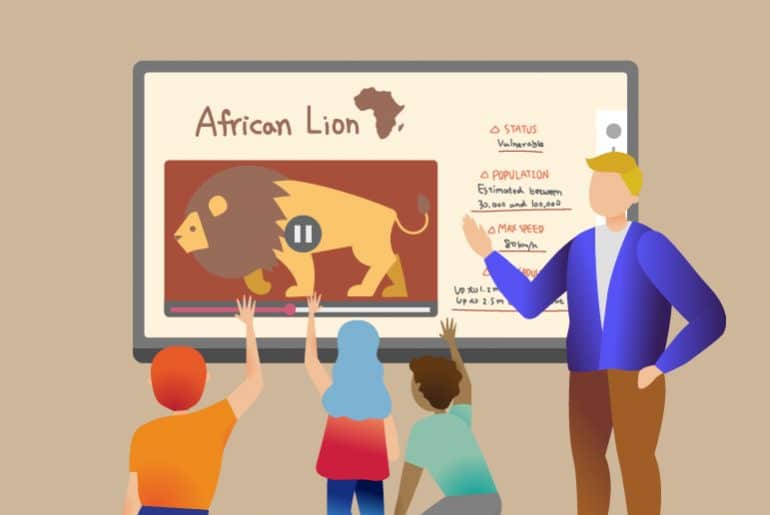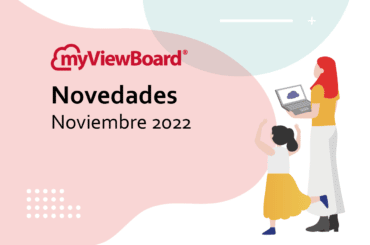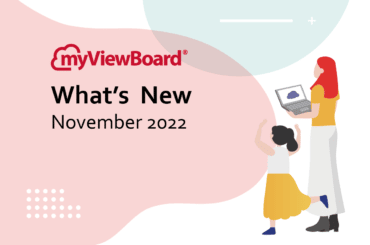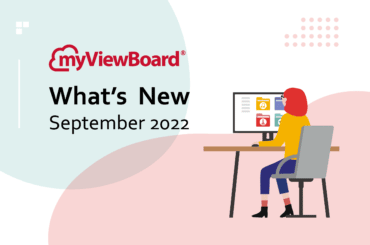This post is also available in: Español (Spanish) Français (French)
Quick Take: Explore the different benefits of video-assisted learning in your classroom:
1. Educational videos in lessons
2. Flipped classroom lessons with videos
3. Students creating their own video lessons
One minute of video learning is worth 1.8 million words. That is according to research company Forrester. We can take that number as metaphorical, based on the old saying, “a picture is worth a thousand words,” then multiplying by 30 frames per second and 60 seconds in a minute.
Still, using video-assisted learning in the classroom is producing concrete results in improving student engagement and achievement, not to mention teacher satisfaction. Video platform Kaltura’s State of Video in Education 2018 survey found 92% of educators see video as improving student satisfaction with their learning experience. It seems these educators are on to something.
What could video learning look like when applied in your classroom? What could your class achieve with this increasingly popular digital education tool? There is no limit to the number of ways you can work educational video content into your lesson, but we have outlined a few of the broader strategies to help spark your imagination.
What watching educational videos can achieve
There is a growing list of user-friendly video-assisted learning platforms where you can find ready-made educational videos to screen in class. They cover everything from basic math through to art history. YouTube is an obvious place to start, but also try out dedicated educational video platforms such as myViewBoard Clips powered by Boclips, the Khan Academy and TEDEd.
While educational videos cannot replace teachers, they can achieve some things a lecture cannot. For one, the visually rich content engages students’ attention far better than a verbal description. Think of describing the rings of Saturn, versus watching actual footage transmitted from NASA’s Cassini probe. Videos can transport students to the far reaches of human endeavor, without the associated costs and safety risks.
By harnessing the power of educational videos in class, teachers cannot only bring learning alive with inspiring content, but they can also free up their own precious time. Salman Khan, the founder of the nonprofit Khan Academy, says that, although it seems illogical, introducing digital tools such as educational videos actually helps to “humanize” the classroom. Screening videos leaves teachers free to guide class discussion or spend more one-on-one time with students, he explains.
Moreover, as teachers can delegate the lecture to an educational video, they can put more time and effort into preparing tailored classroom activities that put students’ newfound knowledge into practice. This leads to students having more time to develop their critical thinking, a key skill necessary for the world of work.
For more insights on what teachers want when looking for educational videos check out: What makes a good educational video?
If you are still concern about using videos in your lessons check out: 5 Myths About Video Learning to learn more about the misconceptions around video learning.

What flipping the classroom can achieve
One of the primary advantages of educational videos arises when students are able to watch content individually. They can pause and repeat the content to learn at their own pace. In contrast to the lecture format, if students do not understand, they do not have to ask the teacher to repeat the explanation, again and again, leading to embarrassment and frustration.
In a flipped learning environment, this usually involves students watching educational videos as homework, in their own time and at their own pace, until they have thoroughly grasped the concept. Khan describes this approach as fundamentally different from the traditional classroom model, where the class moves on regardless of whether everyone understood or not. He says the traditional approach leads to a Swiss-cheese-like structure of knowledge, with each individual having various pockets of understanding missing. That weakens the entire structure and becomes a problem later on.

What students can achieve if they make their own educational videos
We have considered video-assisted learning in class and students watching educational videos on their own time. However, what about having your students produce their own educational material in the first place?
Setting video production assignments gets students motivated about what they are learning in a way a writing assignment might not. Such activities provide opportunities for more creatively-minded students to shine, as well as for more group work and improving critical thinking.
It has long been known that teaching one’s peers cement learning, and what better way to flex that newly acquired knowledge than to create a short educational video. The process of choosing what to include in the video, and what to omit, also leads to greater digital literacy, especially if the task is related to more subjective topics such as media studies.
Moreover, the wide majority of students today have their own smartphones. By dividing the class into small groups, you could have several, brand-new educational videos to screen at the end of a single class.
What your class can achieve with video-assisted learning
There is a growing diversity of video resources available to you and your students at just the click of a button or a tap of a touchscreen. That means the possibilities are limitless on what your class could achieve by incorporating video learning into lessons and homework. The digital world is already waiting for you on your desk and in your pocket. Moreover, it offers a universe of engaging, inspiring, and motivating video content you can start working with right now.
As a dedicated education solution provider, ViewSonic is releasing a video-assisted learning platform: myViewBoard Clips powered by Boclips. This commercial-free, fully copyright cleared and curated platform empowers teachers to integrate educational video into their lesson plans, without worrying about inappropriate content or use.
For more information about how myViewBoard helps to bring video-assisted learning into the classroom, read our Video-Assisted Learning Insights: The Struggle for Teachers to Access Video Content whitepaper.






2 Comments
Hello there! I could have sworn I’ve been to this website before but after checking through some of the post I realized it’s new to me.
Nonetheless, I’m definitely glad I found it and I’ll be bookmarking and checking back often!
I love this…please make it printable!